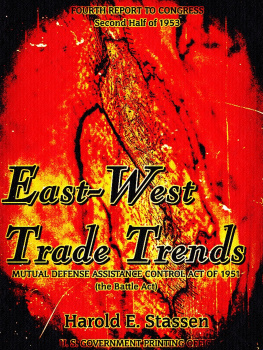Harold G. Vatter - The Rise of Big Government
Here you can read online Harold G. Vatter - The Rise of Big Government full text of the book (entire story) in english for free. Download pdf and epub, get meaning, cover and reviews about this ebook. year: 2015, publisher: Routledge, genre: Politics. Description of the work, (preface) as well as reviews are available. Best literature library LitArk.com created for fans of good reading and offers a wide selection of genres:
Romance novel
Science fiction
Adventure
Detective
Science
History
Home and family
Prose
Art
Politics
Computer
Non-fiction
Religion
Business
Children
Humor
Choose a favorite category and find really read worthwhile books. Enjoy immersion in the world of imagination, feel the emotions of the characters or learn something new for yourself, make an fascinating discovery.
- Book:The Rise of Big Government
- Author:
- Publisher:Routledge
- Genre:
- Year:2015
- Rating:3 / 5
- Favourites:Add to favourites
- Your mark:
- 60
- 1
- 2
- 3
- 4
- 5
The Rise of Big Government: summary, description and annotation
We offer to read an annotation, description, summary or preface (depends on what the author of the book "The Rise of Big Government" wrote himself). If you haven't found the necessary information about the book — write in the comments, we will try to find it.
The Rise of Big Government — read online for free the complete book (whole text) full work
Below is the text of the book, divided by pages. System saving the place of the last page read, allows you to conveniently read the book "The Rise of Big Government" online for free, without having to search again every time where you left off. Put a bookmark, and you can go to the page where you finished reading at any time.
Font size:
Interval:
Bookmark:
| The Rise of Big Government in the United States |
| The Rise of Big Government in the United States |
| John F. Walker |
| Harold G. Vatter |

2 Park Square, Milton Park, Abingdon, Oxon OX14 4RN
711 Third Avenue, New York, NY 10017, USA
No responsibility is assumed by the publisher for any injury and/or damage to persons or property as a matter of products liability, negligence or otherwise, or from any use of operation of any methods, products, instructions or ideas contained in the material herein.
The rise of big government in the United States / John F. Walker
and Harold G. Varier.
p. cm.
Includes bibliographical references and index.
ISBN 0-7656-0066-8 (alk. paper).
ISBN 0-7656-0067-6 (pbk. : alk. paper)
1. United StatesEconomic policy. 2. United StatesPolitics and
government20th century. 3. Fiscal policyUnited States
History20th century. 4. Free enterpriseUnited States
History20th century. 5. Mixed economyUnited States
History20th century. 6. Industrial policyUnited States
History20th century. 7. United StatesForeign relations
20th century. I. Vatter, Harold G. II. Title.
HC106.W15 1997
| 330.97Sdc21 | 96-40286 |
| CIP |
ISBN: 978-0-765-60066-0 (hbk)
Susan and Timothy Walker,
Asa Redmond, Simeon Redmond, and Andrew Culpepper
Font size:
Interval:
Bookmark:
Similar books «The Rise of Big Government»
Look at similar books to The Rise of Big Government. We have selected literature similar in name and meaning in the hope of providing readers with more options to find new, interesting, not yet read works.
Discussion, reviews of the book The Rise of Big Government and just readers' own opinions. Leave your comments, write what you think about the work, its meaning or the main characters. Specify what exactly you liked and what you didn't like, and why you think so.













